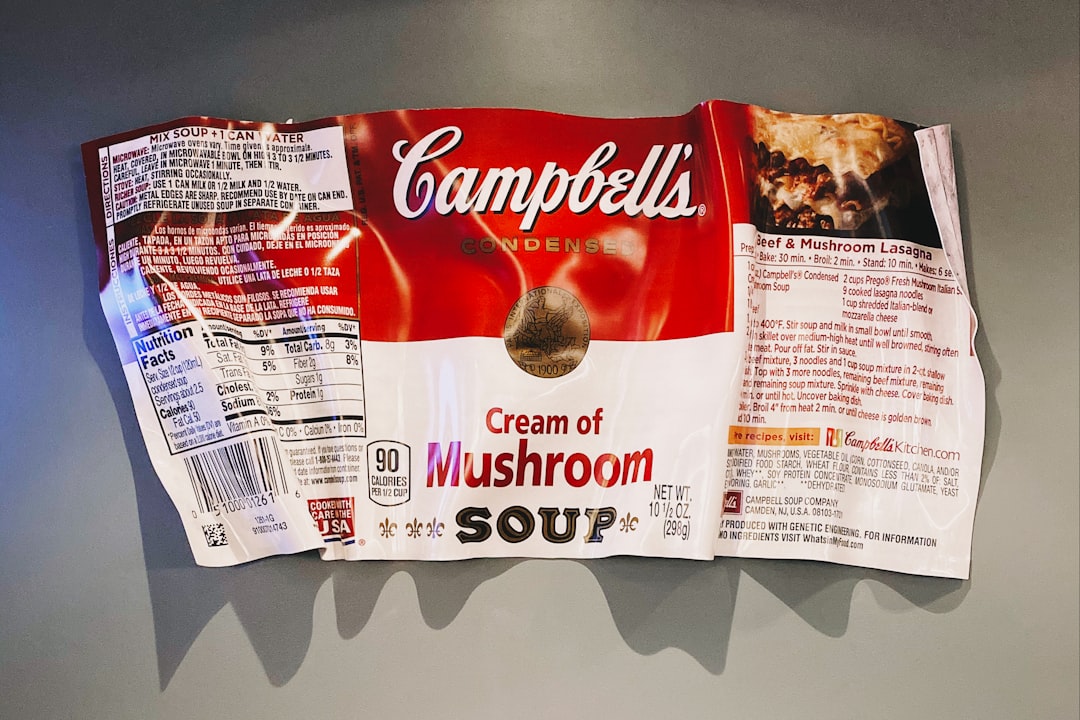- The Daily Tonic
- Posts
- Our food labeling system needs help.
Our food labeling system needs help.
Plus: Can food be medicine?
Thursday. Let’s be honest—who doesn’t love dessert? I love dessert, but I don’t love my blood sugar spiking because I know those spikes aren’t great for my health. The answer? Here are ten desserts less likely to spike your blood sugar (GET THE LIST). And before you freak out at the idea of brownies made of black beans and cookie dough made of chickpeas, just remember—don’t knock it before you try it.
Moving on to some other nutrition-related news, our food labels in the U.S. just aren’t that helpful. So, what can we do better? Maybe we can get some inspiration from other countries that are doing it better than we are. Let’s dive in.
DEEP DIVE
Our Food Labeling Needs Help
When it comes to making the right food choices, the best thing to do is prioritize whole foods that don’t come with nutrition labels. Meat, vegetables, fruits, nuts, and seeds are the stuff you’ll find around the perimeter of the grocery store, and if your diet mainly consists of these foods, you are doing great.
But we all know that isn’t totally realistic. We all end up buying foods with food labels, and this is why it is so important to be able to read and interpret those labels effectively. Unfortunately, though, when it comes to helping us make healthier choices at the grocery store, the current food labeling system in the United States simply doesn't make the cut.
Unlike over 40 countries that have adopted clear, easy-to-understand nutrition labels, the U.S. has lagged behind, depending mainly on voluntary efforts by the food industry. The labels, filled with percentages and grams, contrast sharply with the straightforward warnings about excess sugar in Mexico, France's Nutri-Score system, or the Health Star Ratings in New Zealand (SEE EXAMPLES OF HOW THEY DO IT HERE).
However, there is some good news. The Food and Drug Administration (FDA) is finally considering making changes. Last year, the FDA announced plans to research consumer attitudes toward labeling with the hope of introducing a more intuitive system by June.
This new system might include simple, at-a-glance signals highlighting unwanted ingredients like high sodium, saturated fat, or added sugars. Some proposals favor a "high in" label complemented by a noticeable symbol such as an exclamation point, steering away from the confusing numbers and percentages we have now.
But, of course, there's resistance to those changes, mainly from the food industry, which prefers a label that mirrors the current Nutrition Facts Label, making it challenging for consumers to spot healthier options quickly. This reluctance isn't surprising, given the massive profits generated from highly processed, nutrient-poor foods. And as you’d expect, the industry's opposition has successfully delayed more consumer-friendly labeling for over a decade.
Internationally, straightforward labeling has proven effective. In Chile, stop-sign-shaped labels have prompted manufacturers to reduce sugar in their products and led consumers to buy less sugary drinks. Mexico's labels warn of excess calories, sugar, saturated fats, and even non-sugar sweeteners. France's Nutri-Score and New Zealand's Health Star Ratings have similarly pushed companies towards healthier formulations and helped consumers make better choices.
The FDA's proposed "high in" label could be a game-changer, making it easier for Americans to understand what they're eating and encouraging healthier eating habits. We need a straightforward approach to food labeling that focuses on clarity and simplicity just like what some of these other countries are already doing.
The key takeaway? The time has come for the United States to catch up with the rest of the world in making food labeling a tool for better health, not just a box to tick. By adopting a clear, simple labeling system, we can take a significant step toward improving the nation's diet and health outcomes. Given the rising rates of obesity and chronic diseases, this is a change we desperately need.
OUR PICKS
Tonic Shots
He was diagnosed with stage 3 colon cancer at age 30. This saved his life! (READ MORE)
I’m skeptical, but I’ll bite. A 'DNA diet' may help reduce type 2 diabetes risk, a new study argues. (READ MORE)
How calcium and vitamin D supplements can lower postmenopausal women's risk of cancer but raise the risk of heart disease. (READ MORE)
TRENDING
Microplastics Linked to Increased Risk for Heart Attack, Stroke, Study Finds

Microplastics and nanoplastics — microscopic bits of plastic cast off into the environment — have been found everywhere from oceans to food to human breast milk. Despite growing recognition of microplastics as an environmental hazard, the health effects of these minute particles still isn’t well understood.
Now, in what is being hailed as a landmark study, researchers have identified microplastics in human arterial plaque and linked them to adverse cardiovascular outcomes, such as heart attack and stroke.
The study was published this month in The New England Journal of Medicine.
“This is a new space and definitely a wake-up call,” Dr. Rick Ferraro, a general cardiology fellow at Johns Hopkins Medicine who wasn’t affiliated with the research, told Healthline.
“This is correlation, so it doesn’t prove causation. That being said, just finding [microplastics] in plaque at all is pretty concerning. Then to have this association with subsequent cardiac outcomes is quite striking,” he said.
FROM THE ARCHIVE
Can Food Be Medicine?

“Food as medicine” makes sense. Imagine a world where doctors didn’t just prescribe drugs but also had their patients make dietary and lifestyle changes to treat disease. That’s a no-brainer. We should be doing that now.
However, a recent paper by the American Heart Association argues that we still need further research into “food as medicine” programs. Some experts say that despite the concept intuitively making sense, it is largely underexplored. There just isn’t any significant research investigating the integration of food right into the medical treatment ecosystem.
Okay, but seriously — do we really need more research to understand how beneficial it would be for a doctor to prescribe balanced, high protein, high veggie meals, and regular exercise? Imagine if people would leave the doctor’s office with a basic grocery shopping guide, a rough idea of how much protein and fiber they need each day, and a sample exercise program tailored to their current fitness level. I am not saying that food would replace their diabetes, cholesterol, or blood pressure medication.
But just imagine if they left the doctor with their drug prescription AND some actionable tools and resources to change their diet and lifestyle. Imagine if health insurance covered both their medication costs and a weekly stipend for fresh produce at the grocery store as part of their treatment to reverse chronic disease.
Do we really need long-term studies to prove how beneficial that would be?
SUPPORT US
Support Our Team 🧡
We're all about making your journey towards better health enjoyable and insightful. By becoming a member of The Daily Tonic family, you're not just supporting us, you're elevating your own wellness journey!
We believe in the power of community and the impact of your support. Your membership helps us continue delivering the best health and wellness newsletter around. If you enjoy starting your day with a dose of wellness wisdom from The Daily Tonic, consider joining us as a member.
